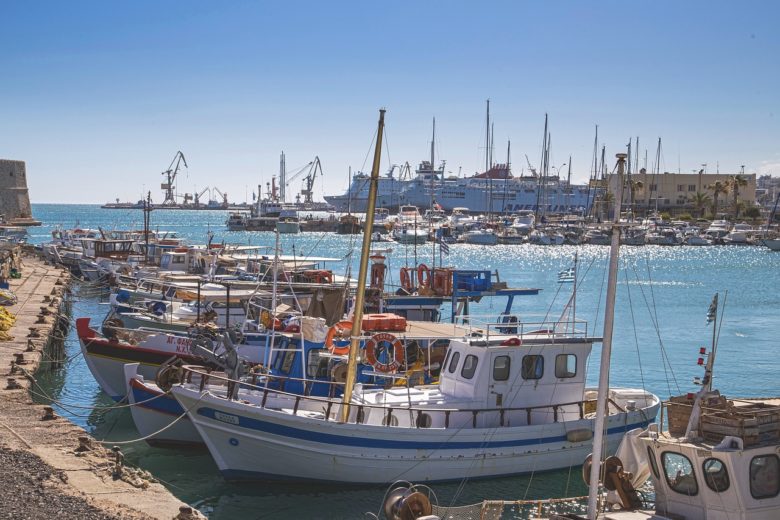
10 Solutions to Reduce Ocean Noise Pollution
We are reader-supported. When you buy through links on our site, we may earn affiliate commission.
The average person associates the word “pollution” with carbon emissions, chemicals and debris. Pollution takes the form of smoke, exhaust from vehicles, oil spills and the discarded refuse that contaminates the country’s coastlines. By comparison, noise pollution doesn’t receive nearly as much attention.
Even so, noise pollution is just as dangerous as the more visible manifestations of pollution. In certain environments, noise pollution can even prove deadly. You don’t have to look further than our oceans to find an example of this, with ocean noise pollution causing the death of precious marine life, including whales.
Researcher Ken Balcomb found evidence for this connection when he sent specimens of beached whales to a lab for testing. Scans showed signs of hemorrhaging around the brain, and traces of blood around the whales’ ears led him to conclude that extreme noise-sonar tests from Navy warships were to blame.
However, Navy warships aren’t the only perpetrators behind this phenomenon. Over the last half-century, deep sea exploration and cargo shipping have increased by a significant margin. Background noise in the ocean has doubled every decade or so, creating difficult living conditions for marine mammals.
So how should we approach the issue of noise pollution in the ocean? Now that we understand the reasons behind the problem, how do we solve it? Here are 10 solutions which have the potential to prevent this form of pollution and restore balance to aquatic ecosystems around the world.
Solutions to Ocean Noise Pollution
1. Large-Scale Sound Maps
The National Oceanic and Atmospheric Administration seeks to document human-made noises in the ocean by collecting data to create the world’s first large-scale sound maps. Their objective is to better understand the nature of the problem and its influence on sea mammals as a way to build a case for reductions. With this mapping, they have the capacity to visualize the issue and accelerate efforts to address it through treaties, laws and regulations.
2. New Acoustic Standards
The National Maritime Organization has the authority to set acoustic standards. They’re a United Nations body responsible for reducing ship pollution and improving marine safety. Naturally, this form of pollution falls under their jurisdiction. Members of the organization have already started discussions about how to limit the amount of noise pollution in the oceans, but the issue demands greater attention if we’re going to see progress.
3. Advocacy and Awareness
Advocates raising awareness of the problem will play a key role in its resolution. When concerned conservationists use social media and other platforms to spread their message and further their mission, they gain the support of like-minded individuals who are willing to donate their time and money. As more people learn about the problem of noise pollution in our oceans, more people will act in the interest of marine mammals to confront ocean changes.
4. Refined Exploration Methods
Oil and gas exploration equipment like air guns are harmful to marine life. Ships use these air guns to send waves to penetrate deep into the seabed, assisting oil companies with the location of hidden pockets of hydrocarbons. This technique — as well as other systems which use sonar blasts — have caused changes in the ocean environment and represent a continuous threat, and those who engage in these harmful practices need to reassess their methods and adapt them.
5. Redesigned Propellers
Marine engineers claim the mechanics of ship quieting are comparatively straightforward when you apply them in the design stage. One of the most significant contributors to the problem is the standard propeller, which produces millions of collapsing voids and bubbles when it cuts through the seawater. To reduce this “cavitation,” engineers have to shape propellers in a very specific way, which will not only lessen noise but also decrease fuel consumption.
6. Quieting Technologies
On the subject of quieting measures for ship design, layers of sound-absorbing tiles for loud rooms may prove effective. Vibration isolators also present a solution, and engineers can mount air compressors, pumps, engines and other types of reciprocating machinery on these systems to decrease noise. We already have access to the technology, which means all we need is a government-led initiative to mandate its adoption for the purposes of animal welfare.
7. Restrictions on Sensitive Areas
Some 60,000 commercial ships occupy the ocean at any given time, producing an inescapable cacophony of sound which threatens the planet’s marine life. This cacophony is especially harmful in some places more than others, affecting areas where animals breed, spawn and feed. Regulatory authorities need to place restrictions in these biologically sensitive habitats and limit the types of activities which cause harm to aquatic ecosystems.
8. Multi-Client Surveys
Companies in the U.S. don’t often coordinate or collaborate when they map areas off the coast, and redundant surveys compound the problem of noise pollution. Other countries such as Norway have taken an improved approach to these surveys, instituting multi-client surveys which group companies together so they only have to perform one survey for seismic data. This is an intelligent strategy which we could implement in the U.S. to protect against noise pollution.
9. Annex for Noise Pollution
The addition of an annex for noise pollution to MARPOL will help to preserve marine life. MARPOL is the abbreviation for the International Convention for the Prevention of Pollution from Ships. Recognizing noise pollution as a pressing threat will prove important in future endeavors to resolve it. Though these organizations have other urgent matters to address as well, the reduction of noise and the integration of quieter designs are no less critical to the health of marine mammals.
10. Additional Studies on the Subject
As mentioned earlier, we have to better understand the nature of noise pollution and its influence on marine mammals if we’re going to make a strong case for change. Although the subject has received attention, researchers have to commit to learning more about the problem to reach conclusions on how best to manage it. The solutions on this list could prove effective — but more than anything, we need data and information to guide our decisions as we move forward.
The Restoration of Ecological Harmony
Among the countless threats to marine life, ocean noise pollution is one of the most formidable. At the same time, it’s one of the simplest to reverse. Unlike smoke, exhaust from vehicles, oil spills and discarded refuse, noise completely disappears without a trace the second you stop making it.
With this in mind, we can feel confident as we continue our mission to restore ecological harmony. Given time, and the collective effort of organizations around the world, we can return peace to the oceans and treat the creatures who live there with the respect they deserve.
Share on
Like what you read? Join other Environment.co readers!
Get the latest updates on our planet by subscribing to the Environment.co newsletter!
About the author
Jane Marsh
Starting from an early age, Jane Marsh loved all animals and became a budding environmentalist. Now, Jane works as the Editor-in-Chief of Environment.co where she covers topics related to climate policy, renewable energy, the food industry, and more.





